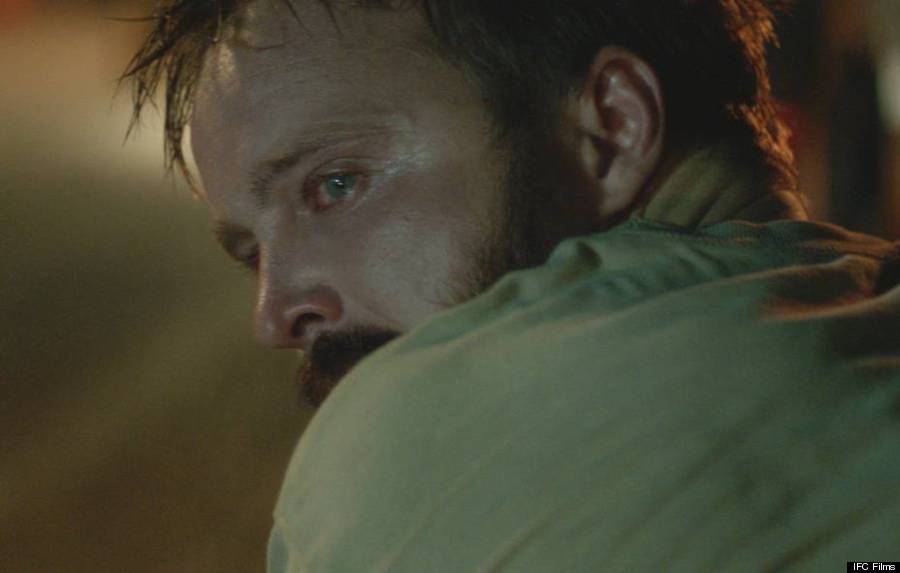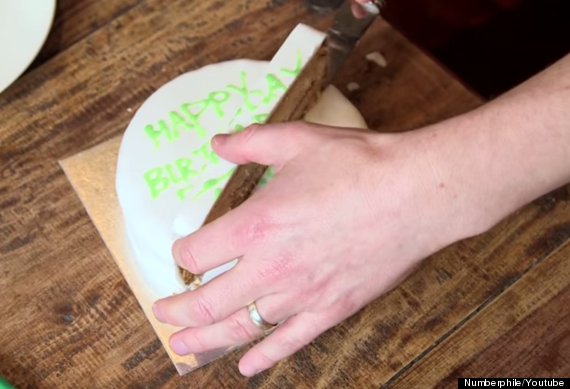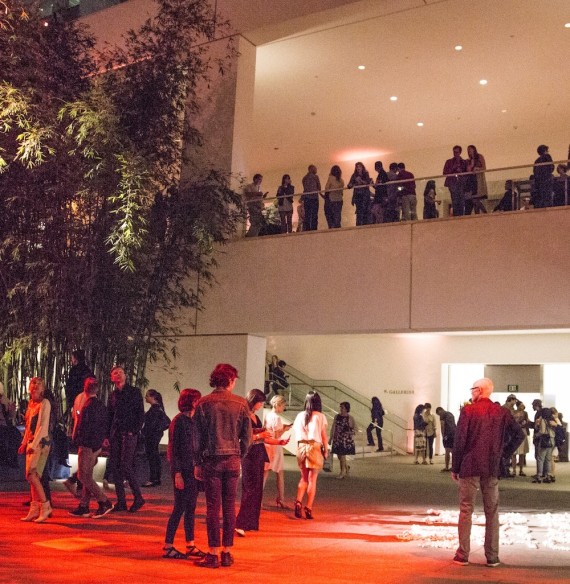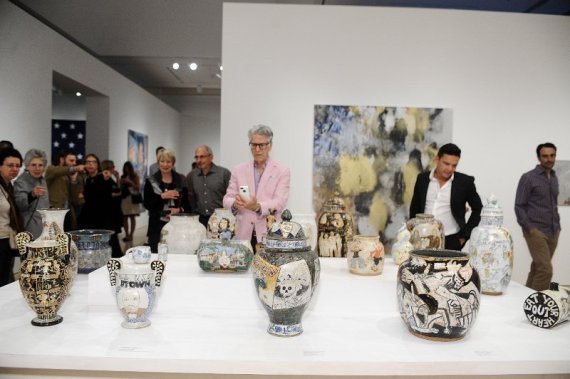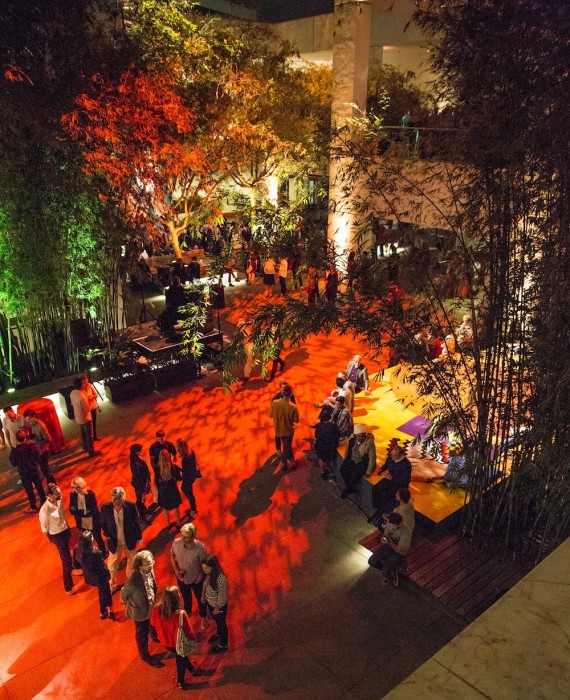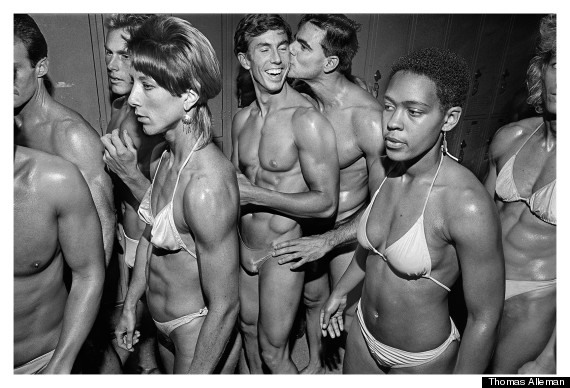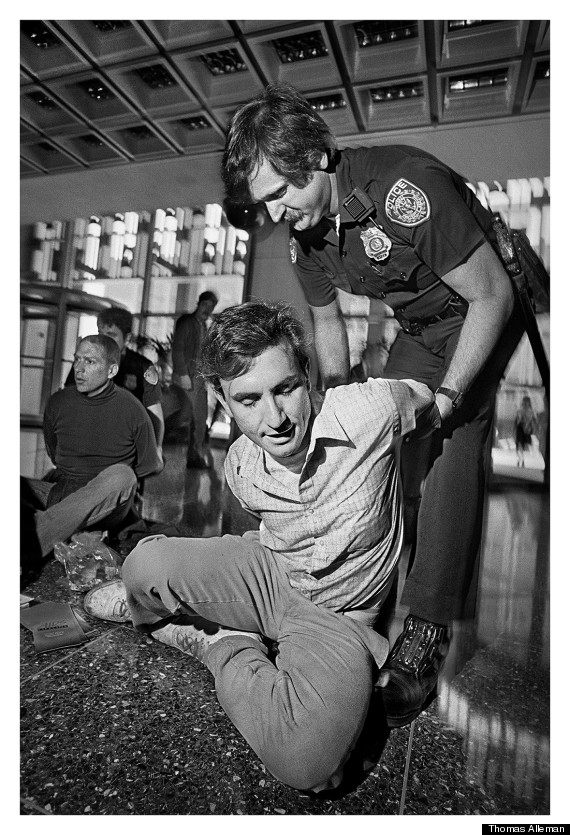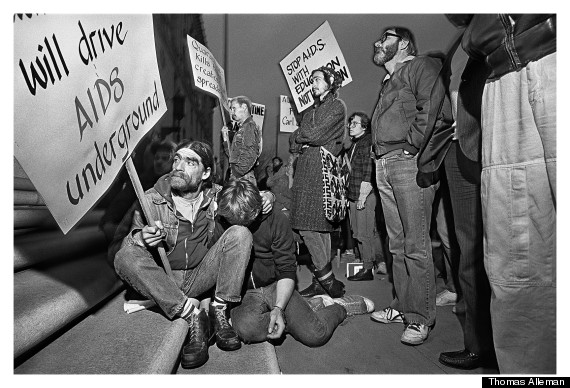A groundbreaking new book by Eric Politzer is currently in production and it provides a platform for the captivating performers at queer cabarets throughout Cuba.
Historically, cabarets on the island nation have served as spaces for lesbian, gay, bisexual and transgender (LGBT) Cubans to gather and form community and support each other, which is especially necessary due to a lack of other queer-friendly spaces throughout the nation. Politzer intends for this project to be a celebration of the performers and their role within the spectrum of queer Cuban identity.
In order to better understand ¡OUT! The Transformistas of Havana, The Huffington Post chatted with Politzer about his time documenting these cabaret spaces, what he hopes to achieve with these photos and the cultural knowledge he hopes viewers will take away.
![cuba]()
The Huffington Post: Where did the inspiration for this book come from?
Eric Politzer: During the nearly 20 years that I had worked in the LGBTQ community as a grassroots activist and social service provider, I regularly witnessed the critical contributions that traditionally marginalized groups were making in the fight for civil rights and the response to the AIDS crisis. I was fascinated to explore what roles some of these groups played in a socialist country that supposedly held negative social, cultural, religious and political attitudes toward LGBTQ folk.
What was the most surprising thing you learned while making the book? Did any of your assumptions get proven wrong?
I saw a short video that touched on the role that the gay cabarets in Cuba have served as the only places for gays and straights to congregate together openly in safety, comfort and mutual respect. This certainly proved to be true; however, I was surprised to see how strong the intergenerational bonds were at the cabarets. This included very nurturing mentoring between older and younger Transformistas, as well as large numbers of young gay men who adoringly attended the performances and showered tips and affection on the Transformistas.
I had assumed that the make-up, attire and production value at the cabarets would be very modest due to the country’s economic conditions. I was amazed at how resourceful the Transformistas were in being able to create often-extravagant fashion statements and dynamic stage performances.
![cuba]()
Do you have a particularly favorite image or story from the book?
My favorite shoot for the book was a trip to a popular beach we took with two of the transgender Transformistas. We did car-to-car photos of them in a stunning lemon yellow Pontiac Bonneville as we drove through the streets of Havana and out onto the highway. At the beach they improvised and gave fierce modeling poses along side the Pontiac. Then they stripped down to minimal beach attire, and proceeded to frolic and play with joyful abandon. They wrestled, had water fights, raced each other along the beach, and waded into the ocean holding hands. Even though they had never been photographed in public -- let alone at the beach -- they exuded such a sense of ebullience and freedom that it left me in awe.
How is this community different from other queer communities you've worked with/documented?
There are a few major differences I see between the Cuban queer community and others I have worked with. First, there really is no queer commercial culture in Cuba to speak of other than the cabarets and the state-run disco. Second, I have not seen a community whose progress and legitimacy seems -– rightly or not -– to be identified to such a great extent with a single government official, in this case Mariela Castro, who is the director of the National Center for Sexual Education and daughter of President Raul Castro. Most impressively, though, is the fact that the Cuban government covers all the expenses involved with gender reassignment: this is clearly very empowering to the transgender community.
What do you hope people take away from your work?
I set out to explore the cabarets as social institutions and I ended up doing a book about the Transformistas as individuals. It is my hope that people appreciate the strength, resilience and dignity that the Transformistas show in the face of so many external challenges that are layered upon their internal struggles as being gender non-conforming. But most of all I hope that for all that may be distinctively Cuban about these Transformistas readers will recognize that the Transformistas’ journey towards self-acceptance, authenticity and meaningful participation in community is an experience shared by LGBTQ folk all over the world.
Check out the slideshow below for more images from the project. ¡OUT! The Transformistas of Havana is also currently engaged in a Kickstarter campaign in order to become fully funded. Head here for more information.
Historically, cabarets on the island nation have served as spaces for lesbian, gay, bisexual and transgender (LGBT) Cubans to gather and form community and support each other, which is especially necessary due to a lack of other queer-friendly spaces throughout the nation. Politzer intends for this project to be a celebration of the performers and their role within the spectrum of queer Cuban identity.
In order to better understand ¡OUT! The Transformistas of Havana, The Huffington Post chatted with Politzer about his time documenting these cabaret spaces, what he hopes to achieve with these photos and the cultural knowledge he hopes viewers will take away.

The Huffington Post: Where did the inspiration for this book come from?
Eric Politzer: During the nearly 20 years that I had worked in the LGBTQ community as a grassroots activist and social service provider, I regularly witnessed the critical contributions that traditionally marginalized groups were making in the fight for civil rights and the response to the AIDS crisis. I was fascinated to explore what roles some of these groups played in a socialist country that supposedly held negative social, cultural, religious and political attitudes toward LGBTQ folk.
What was the most surprising thing you learned while making the book? Did any of your assumptions get proven wrong?
I saw a short video that touched on the role that the gay cabarets in Cuba have served as the only places for gays and straights to congregate together openly in safety, comfort and mutual respect. This certainly proved to be true; however, I was surprised to see how strong the intergenerational bonds were at the cabarets. This included very nurturing mentoring between older and younger Transformistas, as well as large numbers of young gay men who adoringly attended the performances and showered tips and affection on the Transformistas.
I had assumed that the make-up, attire and production value at the cabarets would be very modest due to the country’s economic conditions. I was amazed at how resourceful the Transformistas were in being able to create often-extravagant fashion statements and dynamic stage performances.

Do you have a particularly favorite image or story from the book?
My favorite shoot for the book was a trip to a popular beach we took with two of the transgender Transformistas. We did car-to-car photos of them in a stunning lemon yellow Pontiac Bonneville as we drove through the streets of Havana and out onto the highway. At the beach they improvised and gave fierce modeling poses along side the Pontiac. Then they stripped down to minimal beach attire, and proceeded to frolic and play with joyful abandon. They wrestled, had water fights, raced each other along the beach, and waded into the ocean holding hands. Even though they had never been photographed in public -- let alone at the beach -- they exuded such a sense of ebullience and freedom that it left me in awe.
How is this community different from other queer communities you've worked with/documented?
There are a few major differences I see between the Cuban queer community and others I have worked with. First, there really is no queer commercial culture in Cuba to speak of other than the cabarets and the state-run disco. Second, I have not seen a community whose progress and legitimacy seems -– rightly or not -– to be identified to such a great extent with a single government official, in this case Mariela Castro, who is the director of the National Center for Sexual Education and daughter of President Raul Castro. Most impressively, though, is the fact that the Cuban government covers all the expenses involved with gender reassignment: this is clearly very empowering to the transgender community.
What do you hope people take away from your work?
I set out to explore the cabarets as social institutions and I ended up doing a book about the Transformistas as individuals. It is my hope that people appreciate the strength, resilience and dignity that the Transformistas show in the face of so many external challenges that are layered upon their internal struggles as being gender non-conforming. But most of all I hope that for all that may be distinctively Cuban about these Transformistas readers will recognize that the Transformistas’ journey towards self-acceptance, authenticity and meaningful participation in community is an experience shared by LGBTQ folk all over the world.
Check out the slideshow below for more images from the project. ¡OUT! The Transformistas of Havana is also currently engaged in a Kickstarter campaign in order to become fully funded. Head here for more information.

 Word quickly spread to her family that she would be killed for adopting Western ways, and the family fled its small home on the Pakistani border.
Word quickly spread to her family that she would be killed for adopting Western ways, and the family fled its small home on the Pakistani border.
